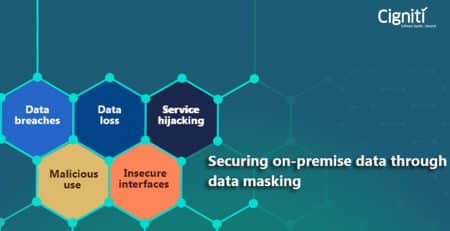What is Data Breach and How Security Testing Helps
|
Listen on the go!
|
The world is more interconnected than ever, and even businesses that make products that are not related to technology are leveraging digital platforms. It has been firmly established that to have a noticeable online presence would not only result in profit, but would result in a loyal customer base. Often, these customers convert into advocates and help promote the business by sharing their experiences and encouraging their social network to try it out for themselves.
In this manner, businesses are quickly leveraging technology at various levels, be it social media or even APIs, to further cement their online presence. However, every technology that is used by various businesses introduces a new set of security vulnerabilities. Even something as basic as validation of input could result in security issues.
Security testing essentially translates to ensuring that the source that the application is coming from, and the data associated, is genuine. There is also the concern of authorization, ensuring that only those entitled to authorize certain functions are able to do so. The integrity of an application and data confidentiality are thoroughly checked to determine the reliability of the software. Despite these measures, however, recent years have experienced data breaches that have resulted in losses of millions of dollars in revenue and negative impact on brand value.
Data Breaches and their Consequences
A data breach is an accidental disclosure of what is regarded as confidential information. It happens without any due notice and without the consent of the information holder. For instance, internet hackers thieving credit card information, an employee giving away intellectual property or financial data to competitors, and the accidental attachment of a patient list to an email, would all count as data breaches.
It is expensive for organizations to have data breaches, especially if they are found to have violated company security standards, thereby allowing for such breaches to happen. According to reports, the fine could be up to €10 million or 2% of annual turn-over for UK organizations, whichever is greater, from May 2018, as per GDPR.
Small merchants are also at great risk, because most of them do not show interest in updating their technology and understanding the necessity of investing in robust software. This leads to maximizing of their risks and falling prey to predatory hackers, owing to a lack of understanding of the gravity of software threats.
The banking industry is especially vulnerable to hackers, and the security measures adopted by banks need to among the best and finest. As the interaction level between banking staff and customers grows further and further, it is essential to have the highest level of security measures in place to determine the authenticity of a service request.
Online Banking Security
When banking online, there are several third-party institutions involved. Right from the network carrier, to the internet service provider, to other interfaces that might be integrated with the bank. Banks take care to implement measures such as two-factor authentication, or even biometrics. Despite such measures, prevention of fraud or impersonation is not easy.
UK citizens, over recent times, have complained about anonymous calls asking if their voice was audible; their response would then be captured, and used when voice authentication is required. As a result, this led to money being siphoned off from the accounts of several users. 50% of financial institutions have inadequate data security frameworks or privacy policies in place, research suggests.
[Tweet “50% of financial institutions have inadequate #datasecurity frameworks or privacy policies in place, research suggests.”]
Online banking security is not merely about feeding in the correct password. It also deals with where it is from that the customer accesses the internet, and their standard online habits. Many banking sites have measures such as personal questions that the site asks, in order to confirm customer identity. In case customers detect that their bank account is being used by somebody without their authorization, most banks have processes firmly in place, so as to process the claims issued by customers. Overall, it is important for the customer to opt to receive notifications and regularly monitor account activity, so that they will be promptly notified upon any suspicious activity.
Security Testing for Digital Platforms
It is in the interest of the banks to have customers use online banking services, as this means a considerable reduction in overhead costs. It also means that customers can learn to trust their banks more, and be assured that they can monitor their account activity. In the event of a fraud, most customers do not realize that claims for a complete refund are subject to conditions. Rather than going into the legal framework and figuring out the monetary aspect, banks and finance institutes are preferring to turn to robust security testing for their software applications.
There are a few common approaches for security testing, and they are based on testing specific targets or focus areas, such as:
- Overall system or a single component
- Server-side applications
- Client-side applications
- Network or OS
For example, monitoring tools focus more on network and file systems, while vulnerability scanners are to test web applications rather than underlying operating systems. Interactive proxies used for Web application security testing are better to understand test requirements and produce results than automation tools.
There are many new concepts for ensuring the integrity of data. Data loss prevention (DLP), for example, is a strategy that ensures that end-users do not have the access to send sensitive or critical information outside the corporate network.
In a nutshell, “DLP software products use business rules to classify and protect confidential and critical information so that unauthorized end users cannot accidentally or maliciously share data whose disclosure could put the organization at risk.”
There are numerous ways in which an application can be broken, and it is how security testing determines the application integrity. Although merely performing security testing does not always assure that an application is free from vulnerabilities, it is highly advisable to include security testing as part of the software testing process. This way, it becomes easier to pinpoint weak links and bottleneck areas within a software application. Software vulnerabilities that could be potentially exploited could be detected quickly and be resolved by a dedicated team of testing experts.
Conclusion
Security testing reveals vulnerabilities in the security mechanisms of the applications under context that protect data and maintain functionality as intended. Typical security requirements may include specific elements of confidentiality, integrity, authentication, availability, authorization and non-repudiation. It is important to seek vendors that are well-equipped with knowledge and tools pertaining to security testing.
Over the last decade, Cigniti has built capabilities, knowledge repository, and test accelerators leveraging experiencing working on over 100 engagements using latest industry standards (OWASP, etc.) and proprietary testing methodologies.
Cigniti offers an in-depth security analysis supported by comprehensive reports and dashboards, along with remedial measures for any issues found. Cigniti has deep expertise in Security Testing for web applications, mobile application, software products, and web services, both on the premise and over the cloud.
Know more about our Security testing services at https://www.cigniti.com/security-testing and get in touch with our Security testing experts, contact us at https://www.cigniti.com/contact-us-us.





Leave a Reply